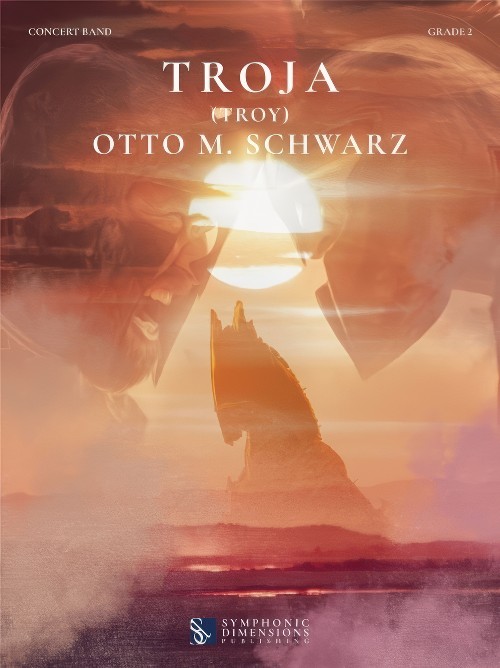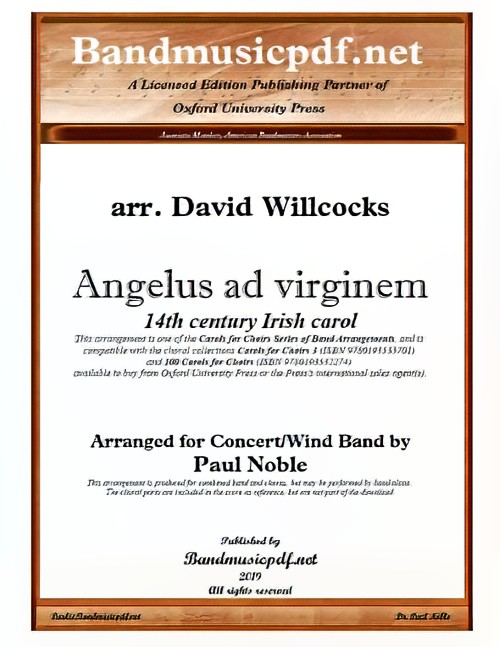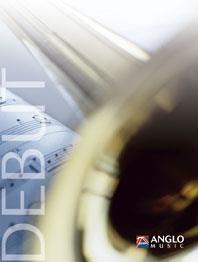Results
-
 £149.40
£149.40O Helga natt - Adolphe Charles Adam
O Holy Night is a very well-known Christmas carol. The origin of the carol is French beginning with the words: "Minuit! Chrtiens, c'est l'heure solennelle". It is about the birth of Jesus and was written in 1843 by a wine merchant and poet by the name of Placide Cappeau (1808 77). He turned to the composer Adolphe Adam (1803 56) and asked him to write a suitable melody. The result was brilliant and the carol was premiered in Cappeau's home town Roquemaure in 1847 by the opera singer Emily Laurey. Based on Cappeau's French text, the English version was written in 1855 by an American Unitarian (Calvinist) minister by the name of John Sullivan Dwight (1813 93). Adolphe Adamwas the son of the pianist and composer Louis Adam (1758 1848), who did not want his son to follow in his foot-steps as a musician. However, Adolphe wanted otherwise, and already at the age of 17 he was accepted to study at the music conservatoire in Paris. He was a student under Franois Adrien Bo eldieu and composed several comical operas that became successful. After the July-revolution 1830 Adam moved to London. He worked for a couple of years before returning to Paris, where he founded a new opera house in 1847, the Th tre national. After the revolution in 1848 it had to close and Adam was ruined, why he had to go back to composing. In 1856 he concluded the ballet Le Corsaire, which together with the ballet Giselle are his most performed works today.
Estimated dispatch 7-14 working days
-
 £75.00
£75.00Sonata - Derek Bourgeois
This work, composed in 1998, was commissioned by the American trombonist Don Lucas as a work for trombone and piano and first performed by him in Birmingham on 19th May 2000. Subsequently, I arranged the music for both solo trombone and brass band and solo trombone and wind band so that it now exists in three formats. The first movement, in B flat major, is brisk and energetic, and is cast in sonata form. The second subject is gentler and more lyrical. The second movement, a scherzo in C major, is the most complex of the four. Basically the structure is a rond. For a long time the music remains in the opening 5/8 time until a new theme introduces more broken rhythms in a more jazzy idiom. After a return of the opening theme the following episode is more tonally ambiguous. Finally, the main theme returns to round off the movement. The third movement, a lyrical adagio, is really one long extended melodic flow. The harmonies are lush and the textures simple and direct. The tonal center is A minor, but the music meanders through so many keys, that this key centre is heavily disguised. The finale is a fiery affair. G minor is really its home key, but throughout the movement the music moves about a lot and the second subject is first heard in A flat minor. The movement's underlying sonata structure is masked not only by its loose tonality but also by its frequently changing time signatures. Like the first movement the second subject is more lyrical in nature and for a while it seems that the music will end peacefully, but a final flurry heralds a triple forte unison on the home note of the first movement - B flat. Derek Bourgeois
Estimated dispatch 7-14 working days
-
 £79.99
£79.99Land of Hope and Glory - Edward Elgar
Elgar's five Pomp and Circumstance Marches were written between 1901 and 1930 with number 1 undoubtedly being the most popular of the five. King Edward VII told Elgar that the tune would 'go round the world' if words were fitted to it. Elgar took the hint and included it (with slight rhythmic changes) in his Coronation Ode of 1902, with words by A. C. Benson. Thus was born Land of Hope and Glory which is now, of course, an integral part of the annual Last Night of the Proms, when the audience (with varying degrees of success!) sing the words along to the original march. Now your concert band can enjoy all the pomp and ceremony of the proms with this arrangement by Philip Sparke.
Estimated dispatch 7-14 working days
-
 £134.99
£134.99Hunting Tower - Ottorino Respighi
Not much is known about the origin of Huntingtower, except for the fact that this ballad was composed in 1931 by the Italian composer Ottorino Respighi (1879-1936), commissioned by Edwin Franko Goldman and the American Bandmaster Association, and was premiered on 17 April 1932 at a concert in memory of John Philip Sousa in Washington D.C. It is not even certain whether Respighi arranged the work himself, or left this to someone else. Huntingtower is the name of a castle in Scotland, where Respighi spent some time. It is possible that this ballad contains his musical impressions of his stay there. The orchestration on this CD, made by Franco Cesarini in 1987, is an adaptation ofthe work to the demands of the contemporary concert band.
Estimated dispatch 7-14 working days
-
 £79.99
£79.99Troja (Troy) (Concert Band - Score and Parts) - Schwarz, Otto M.
The Greek poet Homer wrote about Troy and the Trojan War, which probably took place in what is now Asia Minor, in his Iliad in the 8th century B.C. Nowadays, the term Trojan generally refers to a malware program that is used to gain unauthorised access to computers. This use comes from the legendary Trojan Horse, which saw the turning point in the battle between Greeks and Trojans through the cunning of Odysseus. Let us return to the beginning of the story: Paris, son of the king of Troy, is tasked by Zeus with judging the beauty of the three goddesses Aphrodite, Pallas Athena, and Hera. Aphrodite, the goddess of love, flatters Paris by promising him the most beautiful woman in the world. Soon afterwards, on a journey to Greece, Paris meets the beautiful Helen, who immediately falls in love with him. Since however she is the wife of Spartan king Menelaus, she eventually lets herself be kidnapped by Paris voluntarily. The Greeks then form a large army and go to war against Troy to retrieve Helen, leading to a ten-year siege of the city. The city is eventually conquered not through combat, however, but through Odysseus' cunning ploy. He has the idea of building an enormous wooden horse with warriors hidden inside. The horse is placed at the gates of the city. Thus, the Trojans are tricked into giving up the siege when, despite various warnings, they bring the horse into the city to dedicate it to the goddess Athena. At night, the soldiers climb out of the horse and open the gate for the Greek army. The troops storm the city and burn it to the ground. The royal family and all the Trojan warriors are killed, only Aeneas, the son of Aphrodite, escapes. Later, following many years' wanderings he and his acolytes will become known as the founders of the Roman people. There are various accounts of the fate of the beautiful Helen. She is said to have returned to Sparta with Menelaus and to have ruled there until the end of her life. Or maybe not...Duration: 6.00
Estimated dispatch 7-14 working days
-
 £91.00
£91.00The End of a Love Affair (Flexible Instrument Solo with Concert Band - Score and Parts) - Grottum, Kare - Kjaernes, Bjorn Morten
Kare Grottum is known to most as a pianist and producer by NRK. He was involved in numerous TV productions, both as producer, musician, composer, and arranger. This tune is taken from a CD released in 1992, Fra en musikers dagbok where he brings with him several Norwegian soloists of international class. It is Erling Wicklund who does a brilliant solo on Flugabone which has also used as a starting point for the written improvisation. The arrangement should be played in a slightly swinging way, but not as much as a jazz waltz. Play with the straight eighths and then let it flow, with a faint two against three feeling, which clearly shows up in some places. If you do not have bassoon and oboe, let alto sax and tenor sax make up the duet from 9. Enjoy! Solo Options: C BC Instruments; Bb TC Instruments; Eb TC Instruments. Duration: 4.15
Estimated dispatch 7-14 working days
-
 £75.00
£75.00Angelus ad Virginem (Concert Band with Optional Choir - Score and Parts) - Noble & Willcocks
Angelus ad Virginem (or its English title, Gabriel, From Heven King Was To The Maide Sende) was a popular medieval carol,whose text is a poetic version of the Hail Mary and the Annunciation to the Virgin Mary. Probably Franciscan in origin, it was brought to Britain by French friars in the 13th century. It is said to have originally consisted of 27 stanzas, with each following stanza beginning with the consecutive letter of the alphabet. Surviving manuscripts may be found in a c. 1361 Dublin Troper (a music book for use at Mass) and a 13th or 14th century vellum Sequentiale that may have been connected with the Church of Addle, Yorkshire. Its lyrics also appear in the works of John Audelay (perhaps a priest, he definitely spent the last years of his life at Haughmond Abbey, where he wrote for the monks), in a group of four Marian poems.
Estimated dispatch 7-14 working days
-
 £99.95
£99.95The Music for the Royal Fireworks (Concert Band - Score and Parts) - Handel, George Frideric - Wiffin, Rob
This complete arrangement of The Music for the Royal Fireworks was made in January 2017 at the request of Lieutenant-Colonel Kevin Roberts, Senior Director of Music of the Household Division. I tried to make the version as close to the original as possible while arranging it to work for modern symphonic band. Although tempting, I did not want to ?€arrange?€ it too much, certainly not as much as the familiar Hamilton Harty arrangements. Consequently I kept the whole work in the same key of B flat, either major or minor, and made a few logical adjustments for the lower key and the technical facility of modern instruments. I have added a few apposite dynamics and articulations. I have also notated the music in the appropriate ?€French?€ style, writing out the double-dotted figures, especially in the Overture. In doing this I have gone further than the limited suggestions in the Eulenburg edition and taken account of the expertise of exponents of ?€Historically Informed Performance?€. The instrumentation is for full band but would work without trombones and saxophones and, to a lesser extent, flutes; clarinets though, are essential.Duration: c. 20
Estimated dispatch 7-14 working days
-
 £79.99
£79.99Land of Hope and Glory (Concert Band - Score and Parts) - Elgar, Edward - Sparke, Philip
Elgar's five Pomp and Circumstance Marches were written between 1901 and 1930 with number 1 undoubtedly being the most popular of the five. King Edward VII told Elgar that the tune would 'go round the world' if words were fitted to it. Elgar took the hint and included it (with slight rhythmic changes) in his Coronation Ode of 1902, with words by A. C. Benson. Thus was born Land of Hope and Glory which is now, of course, an integral part of the annual Last Night of the Proms, when the audience (with varying degrees of success!) sing the words along to the original march. Now your concert band can enjoy all the pomp and ceremony of the proms with this arrangement by Philip Sparke.Duration: 2:30
Estimated dispatch 7-14 working days
-
 £56.99
£56.99Super Hit Mega-Mix (Concert Band - Score and Parts) - Lavender, Paul
Your students will know this one before you hand it out. Three of the best jammin' tunes from the popular Jock Jam series of CD's are included in this dance mix. Includes: Get Ready For This, Rock and Roll: Part II (The Hey Song), Whoomp! (There It Is), and Y.M.C.A.
Estimated dispatch 7-14 working days
